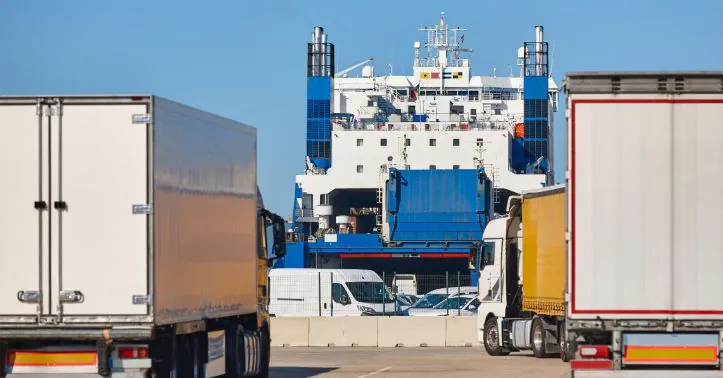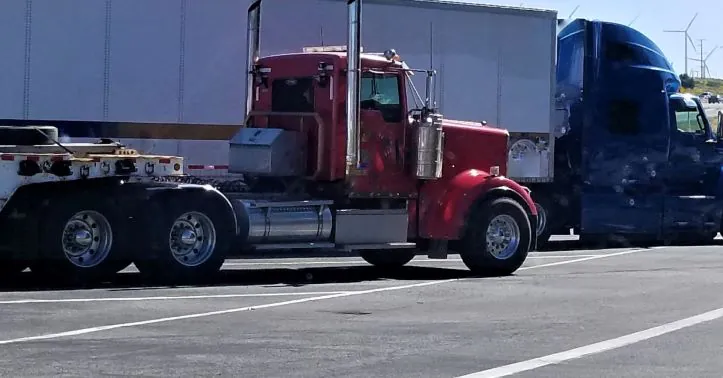LTL Freight Shipping: Do you utilize 100% of your trailer?
Maximizing trailer space is more than just a matter of efficiency. It’s a key factor in cutting costs and improving logistics performance, especially when your truck makes multiple stops along its route. That’s where specialized freight services like Less-Than-Truckload (LTL) shipping come in.

What is less than truckload?
Less-than-truckload (LTL) freight refers to shipments that are too large for standard parcel services (like the postal service) but too small to fill an entire truck or trailer. Furthermore, if your freight doesn’t require all of the space in a standard truck, LTL shipping is a more cost-effective option than using a full truckload carrier.
LTL shipping has become the backbone of modern supply chains, especially in a world shaped by e-commerce growth and the increasing complexity of reverse logistics. It offers a smart, cost-effective solution for transporting smaller shipments without needing a full truckload.
While LTL might represent a smaller slice ($44 billion) of the US’s massive $700 billion trucking industry (Logistics Management, 2020), its impact is anything but minor. It supports thousands of businesses across North America, ensuring goods move smoothly through intricate distribution networks.
In this article, we’ll show you how to maximize your trailer’s potential, whether you’re shipping by volume, weight, or loading meters.
Let’s unpack how to optimize every inch of your trailer.
As a general rule, shipments under 10,000 pounds or those consisting of one to six pallets are well-suited for LTL services. Based on this, four key factors define successful LTL shipping: cost, on-time performance, billing accuracy, and damage-free delivery. Among these, billing accuracy is particularly complex. It requires advanced software capable of highly precise load calculations. We’ll explore this further later on in the article.

It is worth noting that most carriers will have an on-time performance of 90% or better. This figure is even more visible for companies with higher shipment saturation and for those who collect goods from distribution centers without standardized pallets. Loading trailers is much more troublesome, but it remains cost-effective and is used frequently by small and medium-sized companies.
There are different types of LTL shipments:
- Standard LTL shipment: Typically consists of one to six pallets (or loose pieces) and weighs anywhere between 500 to 5,000 lbs.
- Volume LTL shipment: These are larger shipments with more than six pallets weighing over 5,000 pounds that still aren’t large enough for a full truckload. They may have longer transit times as they move when space becomes available.
- Guaranteed LTL shipment: For an additional cost, you can pay the LTL carrier to guarantee delivery by a specific date and/or time. If the carrier fails to meet this guarantee, they often offer a rate reduction.
Less than a truckload in everyday logistics
LTL is a great shipping method for companies that want to ship their consignments fast and over short distances. However, this method is not limited to short distances as items can be shipped over longer distances as well. When evaluating LTL services, cost per pound or kilogram is a key metric (it depends on where your transportation means are located).
Going further with this subject and thinking more narrowly about the US market, LTL is calculated by dividing the shipment cost by its weight. This figure can vary between $0.10 and $0.75 or even more if fuel costs rise. It is important to remember that this is only an example; in that case, most shippers fall within the $0.22 – $0.42 range.

As mentioned before, understanding on-time performance (calculated by dividing on-time shipments by total shipments) is crucial in everyday logistics using LTL. Although transit times aren’t guaranteed, most carriers aim for 90% or better. Finally, billing accuracy is vital to avoid unnecessary costs and reconciliation headaches, which outside auditors can sometimes identify and recover.
A good example of a less-than-truckload service can be given to the UPS Logistics giant. The pricing for UPS Ground with Freight Pricing is determined by a combination of several factors, with a slight focus on providing a cost-effective solution for shipments that are larger than parcels but smaller than full truckloads.
Furthermore, using UPS is a good example for LTL; we see they have base rates with many discounts. The pricing core is derived from the UPS Freight 560 Series tariff. However, customers receive significant discounts based on the shipment’s weight:
- 80% discount for shipments weighing up to 500 lbs.
- 65% discount for shipments weighing 501 pounds or more.
These base rates are determined by the shipment’s actual freight class.
Companies like UPS are more efficient in estimating the cost of LTL due to their widespread network of carriers and links between various countries. UPS Ground with Freight Pricing is specifically designed to facilitate LTL shipping for customers within the contiguous 48 states in the US market, but it goes further. They can cover international shipping in other regions like the EU, Asia, etc.
How do we manage LTL freight loads effectively?
The landscape of truckload freight shipping is undergoing significant shifts, directly impacting how businesses manage their LTL operations. Recent data from FreightWaves (January 2025) reveals a notable trend: the average length of haul for truckloads has plummeted, shrinking by nearly 8% year-over-year from the start of 2025. This contraction is attributed to a simultaneous surge in demand for shorter hauls (under 100 miles) and a decline in longer hauls (over 450 miles).
These changing market dynamics go a long way, with a modest increase in US trucking rates in December (DAT Freight & Analytics, January 2025). This trend highlights the increasing complexity of managing transportation operations.

In this evolving environment, mastering effective LTL freight management is more important than ever. Companies should implement at least one of the two strategies we outlined below. Thanks to this, they can get direct insights into navigating these complexities and optimizing LTL operations for efficiency and profitability.
To effectively manage LTL freight loads, businesses are increasingly leveraging two key advancements, or strategies:
- Dynamic pricing tools transform how LTL shippers and brokers connect with carriers. What was once limited to large LTL shipments (typically 4,000 or 5,000 pounds minimum) has now expanded in 2025. Many carriers in the US market are using their specific quoting methods to price transactional business from brokers. Moreover, this covers 3PLs, freight forwarders, and even small shippers. There is no doubt that this enables real-time rate adjustments. It can effectively optimize cost-efficiency and flexibility.
- Load planning software is essential for maximizing trailer space with multiple stops. This type of software simplifies complex load planning. Users can visualize cargo plans in 3D, add item specifications, and quickly generate optimized load plans. Moreover, they can manage to create them within seconds and easily ensure optimal space utilization.
LTL truck loading with load planning software
It is well known that optimizing the use of trailer cargo space is crucial in logistics. Most logistics companies operate on very tight margins, and this is important for them. LTL transportation is crucial, particularly where multiple shipments use the same vehicle and trucks often make several stops.

This is where freight planning software becomes an essential tool. It provides a huge boost to all freight forwarders and shippers. When companies manage LTL loads, they achieve maximum efficiency and reduce costs, allowing them to stay ahead of the competition.
The load optimizing software uses advanced algorithms and intuitive interfaces, making it quick and easy for less experienced personnel to work with. It transforms the complex puzzle of fitting diverse loads into limited space into a streamlined and predictable process:
- Maximizing space: With features like unlimited calculations and support for thousands of items, the software helps fit more cargo, reducing wasted space and minimizing costs.
- Handling diverse cargo: It efficiently manages a variety of LTL shipments by supporting both imperial and metric units, as well as priority groups for multi-stop routes. This goes beyond basic safe-handling restrictions like non-stackable or non-tiltable items.
- Faster planning: Load planning software allows for Excel integrations and 3D visualization with item descriptions, speeding up data input and reducing errors.
- Versatile vehicle support: The software supports various LTL vehicles, including trailers, trucks, and containers. Thus, it extends your capabilities far more while ensuring tailored load plans for specific equipment.
- Reporting and compliance: It generates step-by-step load reports and verifies weight distribution, helping with safety and regulatory adherence.
- Collaboration and reusability: Sharing and saving load plans improve team collaboration and efficiency for recurring LTL routes.
Summary
Managing LTL freight demands a sophisticated approach that allows handling shipments to be fast and cost-effective. Given its significant economic impact and the trend towards shorter hauls, utilizing dynamic pricing tools and advanced load planning software is crucial.
These technologies optimize costs and maximize trailer space. Companies can ensure compliance while transforming the complexity of diverse LTL shipments into a competitive advantage. Like the parcel industry’s hub-and-spoke model, the right partner can simplify LTL’s often tricky classification and pricing. They can make freight LTL shipping surprisingly smooth and efficient.
What do you think? Are you ready to optimize your LTL operations? Book a demo with one of our representatives to discover how our intelligent load planning software and strategic insights can help you utilize 100% of your trailer capacity and drive greater profitability in today’s dynamic freight market.D




